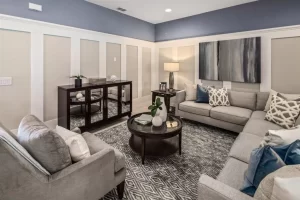The true competitive advantage, and the key to elevating your ROAS (Return on Ad Spend), lies in the intelligent integration of your CRM (Customer Relationship Management) with your advertising campaigns. This synergy will not only allow you to better understand your guests but also to personalize their experience, optimize your investment, and ultimately, skyrocket your direct bookings.
Why CRM-Advertising Integration Is a Game Changer for Hotels
Many hotels operate with information silos: the digital marketing team manages campaigns, the front desk team handles reservations in the PMS (Property Management System) and CRM, and customer communication often becomes fragmented. This disconnect is a missed opportunity to maximize the value of each guest.
Integration breaks down these silos, creating a bidirectional data flow that benefits the entire guest lifecycle:
- Deep Guest Understanding: Your CRM holds a wealth of data about your guests: stay history, room preferences, services used, birthdays, complaints, reviews, etc. By integrating this with your advertising platforms, you transform anonymous audiences into hyper-personalized segments.
- Extreme Personalization and Relevance: Ads are no longer generic. You can show specific offers to guests who have visited your spa, remind them of a romantic weekend offer if they’ve already booked a couple’s getaway, or target guests celebrating an upcoming anniversary. This relevance dramatically increases Click-Through Rate (CTR) and conversion rate.
- Optimized Ad Spend: By knowing who your most valuable customers are and how they behave, you can allocate your budget more efficiently. Reduce spending on irrelevant audiences and focus on those with the highest probability of conversion and generating high Lifetime Value (LTV).
- Improved ROAS: By increasing the relevance of your ads, improving conversion rates, and optimizing your spend, the direct result is a significantly higher ROAS. You’ll be spending less to acquire each booking and maximizing the value of each one.
- Loyalty and Repeat Business: Integration allows you to nurture relationships beyond the first stay. You can create specific retention campaigns, loyalty offers, and post-stay communications that encourage repeat bookings, a more profitable revenue stream than acquiring new customers.
How to Integrate Your CRM with Your Advertising Campaigns: Key Steps
Integration isn’t a one-size-fits-all process, but it follows fundamental principles that you can apply to your hotel.
1. Choose the Right CRM and Advertising Platforms
- Hotel-Specific CRM: Prioritize a CRM designed for hotels or one that offers robust integrations with hotel PMSs. Examples include Salesforce, HubSpot, or specific solutions like Cloudbeds, Opera PMS, Mews, which often have CRM modules or integrate with them.
- Dominant Advertising Platforms: Integration will primarily focus on Google Ads and Meta Ads (Facebook and Instagram), as they are the most powerful platforms for guest acquisition and loyalty.
2. Set Up Consistent and Clean Data Collection
- Data Unification: Ensure your CRM is the central source of truth for your guest data. All touchpoints (direct bookings, imported OTAs, check-ins, in-hotel interactions) should flow into the CRM.
- Data Quality: Garbage in, garbage out. Implement processes to ensure the cleanliness, consistency, and timeliness of data in your CRM. Remove duplicates, standardize formats, and update contact information.
- Privacy Compliance (GDPR, CCPA): It’s essential to be transparent with your guests about the use of their data and obtain proper consent for marketing purposes.
3. Bidirectional Data Synchronization
This is the essence of integration.
- Exporting Data from CRM to Ad Platforms:
- Google Ads (Customer Match): Export hashed email lists of your customers (to protect privacy) and upload them to Google Ads. You can create audiences for:
- High-value customers: Offer them exclusive deals for repeat bookings.
- Inactive customers: Reactivation campaigns.
- OTA customers: Incentivize them to book directly next time.
- Customers who have booked a certain category: Offer them an upgrade or a related package.
- High-value customers: Offer them exclusive deals for repeat bookings.
- Meta Ads (Custom Audiences): Similar to Google Ads, upload email lists or phone numbers to create custom audiences for retargeting, reactivation, or to build “Lookalike Audiences” based on your best customers.
- Google Ads (Customer Match): Export hashed email lists of your customers (to protect privacy) and upload them to Google Ads. You can create audiences for:
- Importing Advertising Data to CRM:
- When a user from an ad campaign makes a booking, that information (the source channel, the campaign that generated the click) should be recorded in the customer’s profile in the CRM. This allows you to understand which campaigns attract which types of guests and their long-term value.
- Use UTM parameters in your URLs for precise tracking.
- When a user from an ad campaign makes a booking, that information (the source channel, the campaign that generated the click) should be recorded in the customer’s profile in the CRM. This allows you to understand which campaigns attract which types of guests and their long-term value.
4. Advanced Segmentation for Personalized Campaigns
With integrated data, you can go far beyond basic segmentation.
- Segmentation by Booking Behavior:
- Customers who book luxury suites.
- Customers who always choose rooms with sea views.
- Customers who book in low season vs. high season.
- Customers who book luxury suites.
- Segmentation by Preferences and Services:
- Guests who use the spa.
- Customers who dine at your restaurant.
- Families with children.
- Business travelers.
- Guests who use the spa.
- Segmentation by Lifetime Value (LTV):
- Identify your most profitable guests and create exclusive loyalty programs or “recognition” campaigns for them.
- Target specific ads to customers with low LTV to incentivize more bookings.
- Identify your most profitable guests and create exclusive loyalty programs or “recognition” campaigns for them.
- Segmentation by Customer Lifecycle:
- Prospects: Users who interacted with your website but didn’t book (retargeting).
- New customers: Welcome campaigns and for first repeat.
- Returning customers: Loyalty offers.
- Inactive customers: Reactivation campaigns.
- Prospects: Users who interacted with your website but didn’t book (retargeting).
5. Personalizing Ad Messaging and Offers
- Dynamic Creatives: Use CRM information to personalize the content of your ads. For example, if you know a customer has previously booked a pool-view room, show them creatives of those rooms or related new offers.
- Exclusive Offers: Create campaigns with offers accessible only to specific CRM segments (e.g., a 15% discount for customers who have visited 3 times).
- Reactivation Messages: “We miss you, [Customer Name]. Come back and enjoy your stay at [Hotel Name] with a 10% discount!”
6. Enhanced Multi-Channel Attribution
By having a more complete data flow between your CRM and advertising platforms, you can use more sophisticated attribution models (like Data-Driven in Google Analytics 4) with greater accuracy. Your CRM will act as the source of truth for the final conversion, allowing you to see which campaigns truly contributed to that booking, even if it wasn’t the last click.
A well-integrated CRM can help you understand the Customer Lifetime Value (CLTV) associated with each acquisition channel, allowing you to optimize your ROAS not only for the immediate booking but for long-term profitability.
7. Marketing Automation
- Automated Workflows: Configure your CRM so that, based on guest actions or data, certain advertising campaigns or email sequences are automatically triggered. For example, if a guest hasn’t booked in a year, the CRM could add them to a “reactivation” audience in Google Ads and send them a special offer via email.
- Internal Notifications: The CRM can alert your marketing or sales team to remarketing opportunities or key customer interactions.
8. Continuous Analysis and Optimization
- Unified Reports: Create dashboards in tools like Looker Studio (Data Studio) that combine data from your CRM, Google Ads, and Meta Ads. This will give you a comprehensive view of your ROAS and campaign performance by customer segment.
- Continuous A/B Testing: Test different creatives, ad copy, audience segmentations, offers, and bidding strategies based on your CRM data to constantly optimize performance.
- Feedback Loop: Data from your campaigns should feed back into your CRM, enriching customer profiles with information about the campaigns they interacted with and converted from. This closes the loop and improves future segmentation.
Challenges and Considerations
- Technical Complexity: Integration might require technical expertise. Consider working with an expert partner.
- Initial Investment: A good CRM and integration tools can represent an investment, but the long-term return justifies the cost.
- Data Privacy: Always prioritize data protection and comply with all relevant regulations (GDPR, CCPA).
- Cultural Shift: Integration requires marketing, sales, and operations teams to work more collaboratively and data-centric.
In today’s competitive hotel landscape, integrating your CRM with your advertising campaigns is not just an advantage; it’s a necessity. It allows you to go beyond superficial ROAS and calculate a return on investment that reflects real revenue and the long-term profitability of your customers. By personalizing every interaction, optimizing your spend, and fostering loyalty, your hotel will not only attract more attention but convert that attention into profitable bookings and a loyal guest base.
Contact us at Digisap, and let’s design together an SEO and digital marketing strategy so your hotel is the first choice, and guests book with you, not the competition.
Click here to schedule your free consultation and take your hotel to the next level





